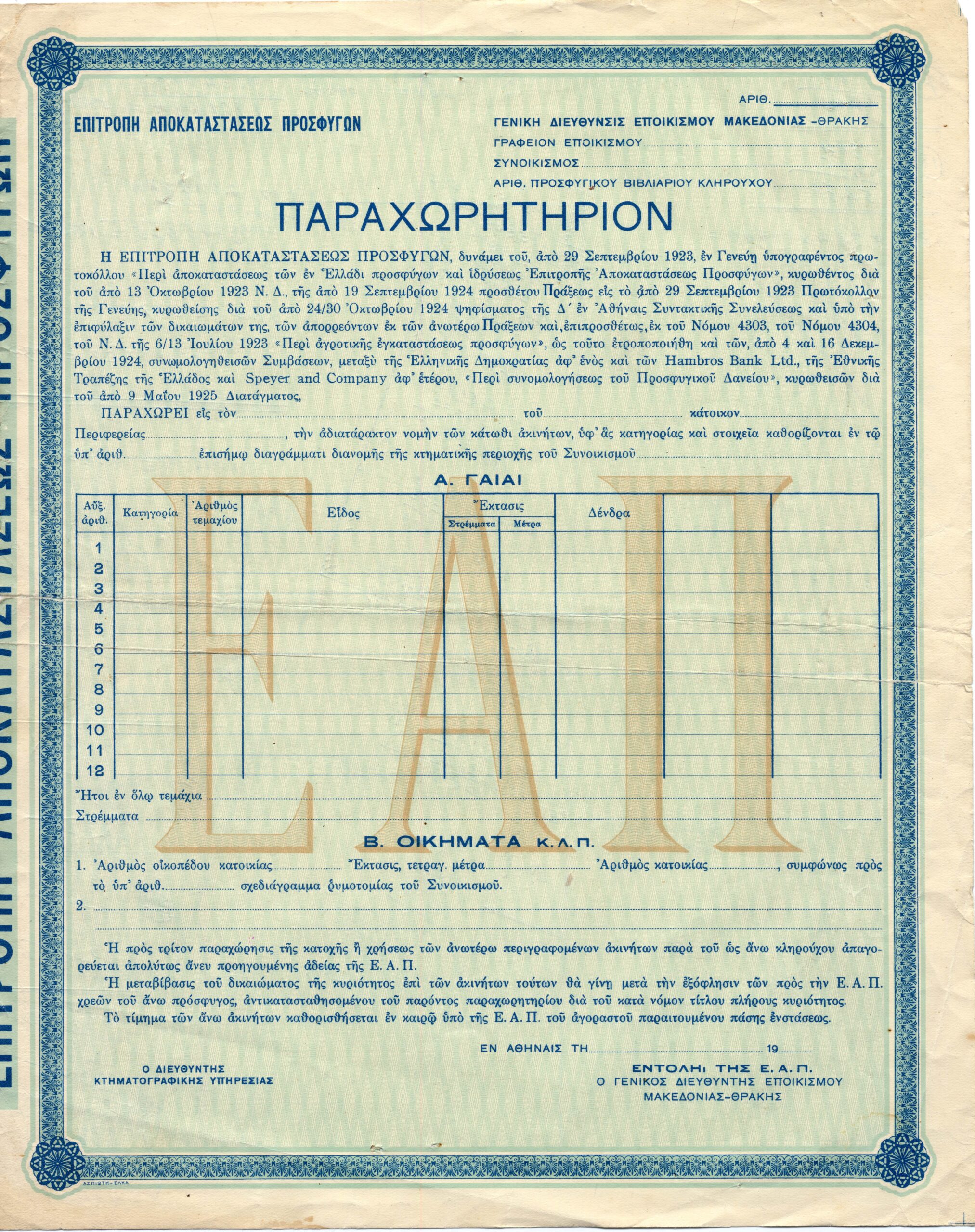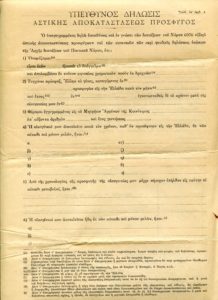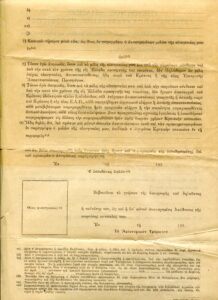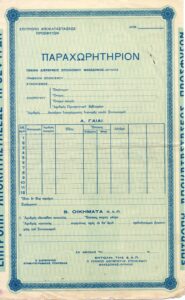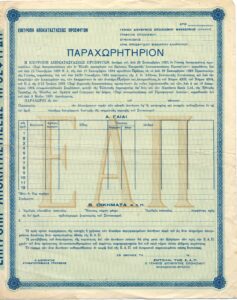The Refugee Settlement Commission
City
Migration Period
City Narratives
Full Description
The Refugee Settlement Commission (EAP) was established on the initiative of the League of Nations in September 1923, following a request by the Greek government. The Commission was an independent organisation with acknowledged legal status which undertook the task of providing relief to refugees and promoting their rehabilitation. The Greek state ceded a number of immovable assets to the Commission: exchangeable properties left behind by the Muslims during the population exchange process, properties belonging to people who had left Greece for Bulgaria according to the Treaty of Neuilly-Sur-Seine in 1919, public land, land requisitioned during an earlier land reform, and monastic lands. The sum of two loans taken out by the Greek government in 1924 and 1928 was also transferred to the Commission, as well as land plots in or around the cities for the construction of urban settlements.
The Commission focused mainly on agricultural rehabilitation, providing thousands of refugee families with arable land, equipment (farm animals, tools, animal feed, seeds) and housing, whether by constructing settlements or by granting exchangeable houses. By 1926, 147,751 refugee families had settled in the country aided by the Commission, of whom 116,226 in Macedonia and 16,625 in Thrace. These two regions were chosen both for economic reasons, since the presence of exchangeable lands there ensured wider land availability, and national reasons, as these multiethnic, border regions were considered to be in need of a demographic boost. The Commission’s objective was to encourage the creation of small farms which would benefit the country’s agricultural economy and it continued its work until 1930.
The property transfer deed given by the Commission to refugee families stipulated that the refugees had usufruct of the transferred properties, but full ownership transfer could take place only after the refugees had paid off their debt to the Commission.
The Commission was not heavily involved in the urban rehabilitation of refugees, except in the case of settlements established on the suburbs of large cities, mainly in Athens (Kaisariani, Nea Ionia, Vyronas, Kokkinia). The task of urban rehabilitation, particularly housing rehabilitation, was undertaken by the Refugee Relief Fund (from 1922 to 1925), the Ministry of Hygiene and Welfare, and other public and private institutions (such as urban housing associations). After 1925, self-funded housing was also promoted. The state, through the National Bank of Greece, granted urban refugees an advance on the compensation they were entitled to by giving them bonds and then proceeded to auction off exchangeable properties.
The urban rehabilitation process did not progress as fast as the agricultural one and required the submission of statements, in which the leader of the refugee household would provide information on their financial and family situation, declare that they had never participated in any other agricultural or urban rehabilitation scheme, and state their wish to acquire state-sponsored housing in a specific region.
Bibliography
Vasileios D. Krimpas, ‘The task of agricultural rehabilitation and the Refugee Settlement Commission’, The Bulletin of the Centre for Asia Minor Studies, issue 13 (1999), pp. 225-268. https://doi.org/10.12681/deltiokms.148
